How much water do we use?
- Books Name
- Class 6 Science Book
- Publication
- PathSet Publications
- Course
- CBSE Class 6
- Subject
- Science
How much water do we use?

Introduction: It is common knowledge that water is important on our Earth and without water, life as we know it would cease to exist. While Earth has an abundant reservoir of water, covering three-fourths of its surface, Freshwater is a mere 2.6% of the total water. Water is said to be a renewable resource but the rate at which humans and animals are using water, fresh water might be a scarce resource in the recent future. Our body is also made up of 70% water and we use water for a number of reasons from cooking to cleaning and of course drinking it. A lot of experts predict that the next World War will be fought over water.
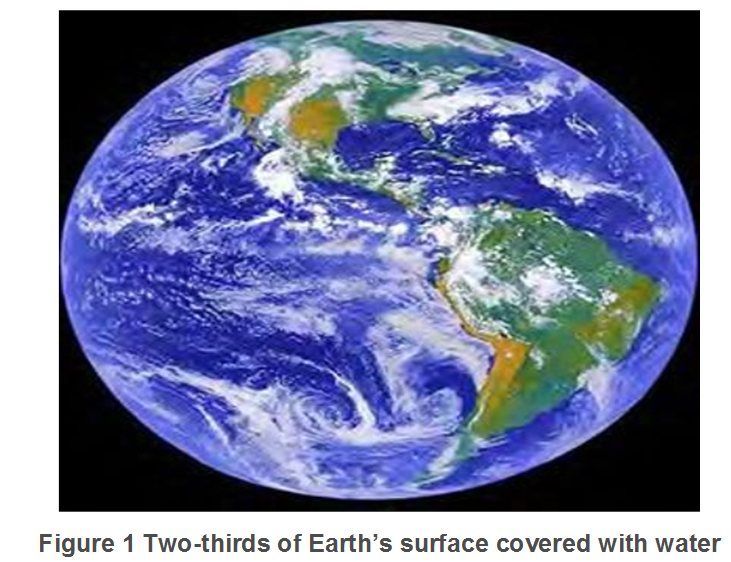
How Much Water Do We Use?
- Water makes up a majority of your body weight and is involved in many important functions, including:
- flushing out waste from your body
- regulating body temperature
- helping your brain function
- Water is precious, fundamental and the most essential substance required for the existence of life on earth.
- Water is found naturally, abundantly on our planet earth.
- About two-thirds of the total earth’s surface is covered with water.
- Water is a transparent, odorless and tasteless inorganic molecule composed of hydrogen and oxygen.
Uses of Water
We all use water for different purposes, which includes everyday household uses, including:
- Drinking
- Cooking
- Cleaning
- Washing
- Bathing
for other domestic, irrigating, cultivating the crops and industrial requirements.
Thus, water is required for many activities, therefore it is an essential element required for the continuity of life on the planet.
Where do we get water from?
- Books Name
- Class 6 Science Book
- Publication
- PathSet Publications
- Course
- CBSE Class 6
- Subject
- Science
Where do we get Water from?
People living in different regions have different sources of the water that they use. While some draw it from wells, ponds and lakes directly, others like many of us receive water through taps via a network of pipes connected to these lakes, ponds and rivers.
Where Do We Get Water From?

Sources of Surface Water:
- Lakes
- Ponds
- Streams
- Rivers
- Storage Reservoir
Sources of Ground water:
- Open wells
- Tube wells
- Artesian wells
- Springs
- Infiltration
Water cycle
- Books Name
- Class 6 Science Book
- Publication
- PathSet Publications
- Course
- CBSE Class 6
- Subject
- Science
Water cycle
Water Cycle
Water cycle can be defined as the process through which water gets evaporated from open surfaces like oceans and seas, gets condensed as it rises in the cool atmosphere and ultimately pours down as rain (precipitation) back into oceans, lakes, rivers and ponds.
To know how these rivers, get their water from we need to study a little about the water cycle and the processes of evaporation and condensation.
Evaporation: The process of conversion of water into its gaseous state i.e. vapours is known as evaporation.
Condensation: The process of conversion of vapours into water is referred to as condensation.
Transpiration: The process of evaporation of water from the surface of the leaves into the atmosphere is defined as the process of transpiration. In this manner, plants also contribute to the water cycle.

- The water cycle is the circulation of water through the process of evaporation or condensation as rain or snowfall.
- The water cycle is like a ring.
- In nature, the water cycle takes place from sea to land and back to sea again.
- It is through the process of water cycle that we are able to make use of the ocean water.
- Ocean water is saline in nature and hence cannot be used directly.
- When it gets evaporated, it leaves behind the salts and forms clouds.
- As the warm air from these surfaces rises into the cold air of the atmosphere, saturation and condensation occur to form tiny droplets of water which result in cloud formation.
- These clouds then lead to rainfall and snow which deposit in lakes, wells and ponds is then used by us to satisfy our needs. Apart of this rainwater gets absorbed by the soil, some of it gets evaporated while the rest seeps in the ground and becomes another source of water for us in the form of groundwater.
- Handpumps, wells and even lakes draw water from groundwater. The water cycle is a continuous process
In this process, the water on the earth changes into three different states of matter:
- Solid
- Liquid
- Gas
The complete process of the water cycle involves the following process:
1. Evaporation :

- The process of changing water to its vapour form is known as evaporation.
- Evaporation takes place from open surfaces of water all the time—day and night.
- Evaporation of water takes place continuously from oceans, rivers, lakes, wells and soil. Oceans, seas, rivers, lakes, ponds and wells together are often known as water bodies.
- During the daytime, sunlight falls on the water in oceans, rivers, lakes. The fields, roads, rooftops and other land areas also receive sunlight. The sunlight also carries heat with it. As a result, water from oceans, rivers, lakes and the soil, and other land areas gets continuously changed into vapour.
- Thus, water vapour gets continuously added to the air due to evaporation.
2. Condensation :

- The process of conversion of vapour into liquid form of water is called condensation.
- The process of condensation is opposite to evaporation.
- Cloud formation: The climate close to the earth’s surface is warm. It gets cooled as one goes up in the atmosphere. Water vapour being lighter rises in the atmosphere. At the upper layer of the atmosphere, where the temperature is lower, the vapour gets condensed into tiny water droplets and forms clouds.
3. Precipitation :

- Clouds carry small droplets of water in them. It may so happen that many droplets of water come together to form larger-sized drops of water. Such drops of water may become so heavy that they begin to fall. The falling of water drops is called precipitation.
- Rain: If the water during precipitation remains liquid till it reaches the surface of the earth, we have rained.
- Hail/Snow: Sometimes precipitation may be in the form of hail or snow. Water in hail or snow is in its frozen or solid form.
- Dew: Many times, especially during winter nights, the air near the surface becomes quite cool. As a result, the water vapour present in it condenses to form water droplets. These water droplets appear as dew.
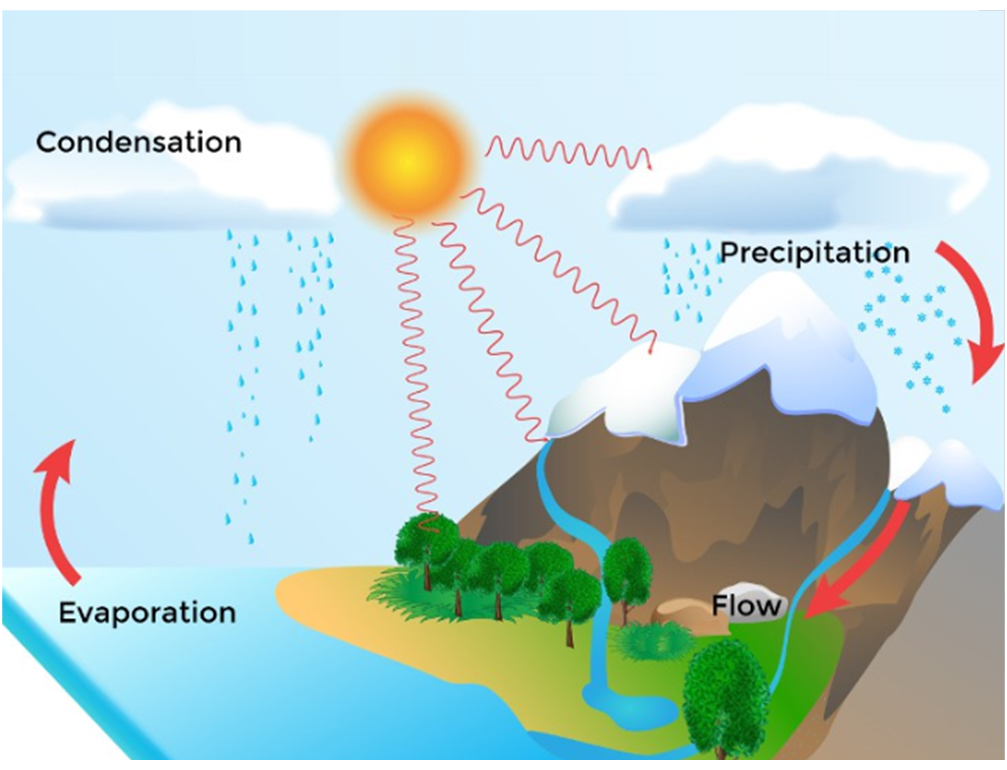
Back to the oceans
- Books Name
- Class 6 Science Book
- Publication
- PathSet Publications
- Course
- CBSE Class 6
- Subject
- Science
Back to the Oceans
Out of 71% of the water on earth, 97% is the water from oceans and seas. Water from oceans and seas contains dissolved salts in it, hence this water is called saltwater or saline water.
- Rainwater falls into rivers, lakes etc.
- The rain droplets fall into oceans, rivers, ponds, seas.
- Water from the rivers, lakes, ponds finally flows into the sea and ocean.
Groundwater: The groundwater is rainwater which mainly comes from seepage of water, accumulated under the ground
What if it rains heavily?
- Books Name
- Class 6 Science Book
- Publication
- PathSet Publications
- Course
- CBSE Class 6
- Subject
- Science
What If It Rains Heavily?

In case of continuous rains, the water level of rivers, lakes and ponds will rise. The soil surface will get laden with water resulting in a flood. Consequences of the flood: When the soil gets too much water, the air in the soil comes out of it. Due to the lack of air, the animals living inside the soil also come out of it. Heavy rainfall also results in the loss of crops due to floods.
What happens if it does not rain for a long period?
- Books Name
- Class 6 Science Book
- Publication
- PathSet Publications
- Course
- CBSE Class 6
- Subject
- Science
What Happens If It Does Not Rain For A Long Period?
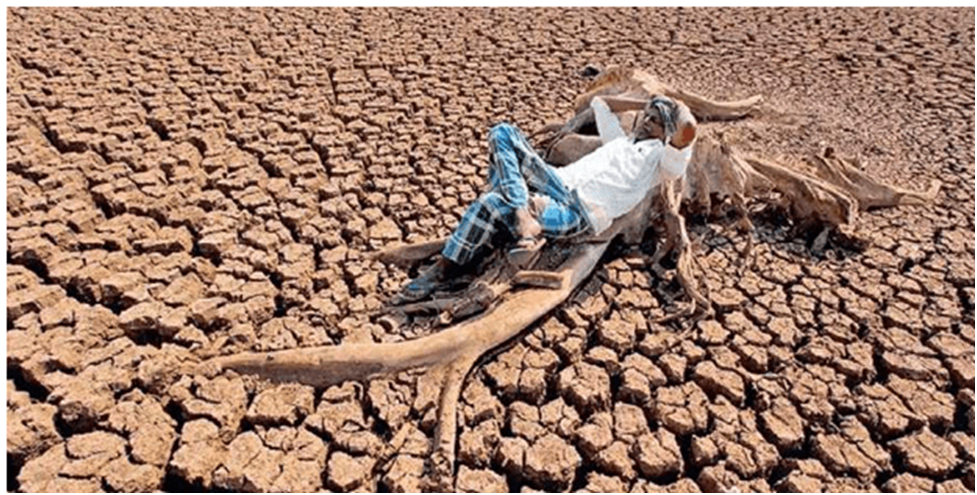
If it does not rain for a year or more at a place, the soil will lose its water by evaporation and become dry. Water will also be lost through the transpiration process from the plants. Rivers, ponds and wells will dry and the water table would lower down. All this will affect humans, animals and wild plants. If it continues for one or two years consecutively, it results in drought.
Excess v/s Deficient rainfall
Intensity and duration of rain vary in different regions across the country. While rainfall is very important for irrigation and the continuous availability of water, excess rainfall can pose a number of problems. Due to excess rainfall, the water level of rivers and oceans rises which can potentially spread and submerge nearby cities and villages which poses a grave danger to both life and property. These are known as floods.
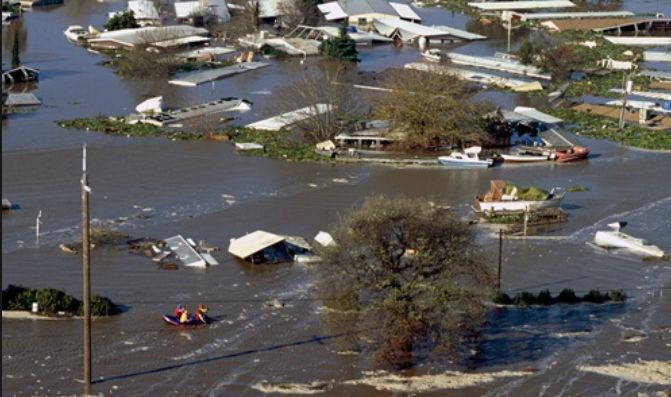
Similarly, deficient rainfall can also prove to be life-threatening. A lot of farmers in India continue to depend on rainfall to irrigate their fields. In case of deficient rain, soil and wells still continue to lose water through transpiration and evaporation and if it doesn’t rain for a prolonged period, fields can dry up because even the groundwater does not get replenished. These are known as droughts.
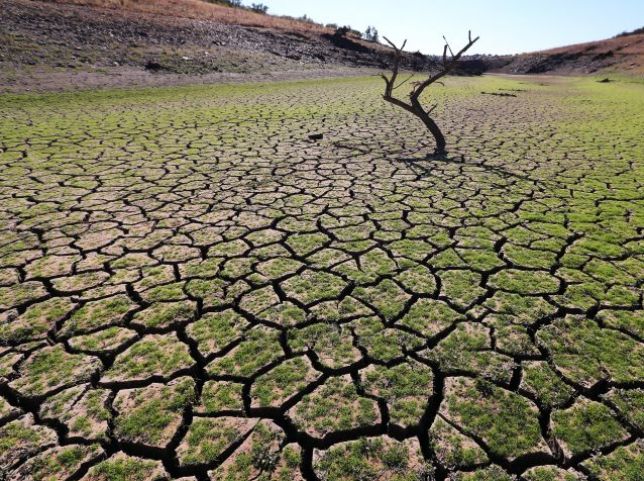
How can we conserve water?
- Books Name
- Class 6 Science Book
- Publication
- PathSet Publications
- Course
- CBSE Class 6
- Subject
- Science
How Can We Conserve Water?

- Water must be used carefully. We should take care that water should not get wasted.
- The water used in the garden doesn’t need to be fit for drinking. Yet most often we water the gardens with drinking water supplied by the corporation. We should use water for gardening that has already been used in the kitchen for washing vegetables and fruits, etc.
- Always be careful that the water tank in your house doesn’t overflow when it is being filled.
- Don’t use a hosepipe to wash your car or scooter. Use a bucket instead.
- If you leave the tap running while brushing your teeth, about 16 litres of water get used up. Fill a mug with water and use it instead.
Conservation of water
There are a number of reasons why water conservation needs to be a priority for everyone. Here are some of them:
- Mostly all water is in the oceans in saline form and can’t be used directly
- While the total water on Earth does not change, but the water available for us to use diminishes with overuse
- When the groundwater goes below drastically, it cannot be accessed anymore
- Water is required in industries and for production of food
- The population growth is exponential but the water sources are only depleting
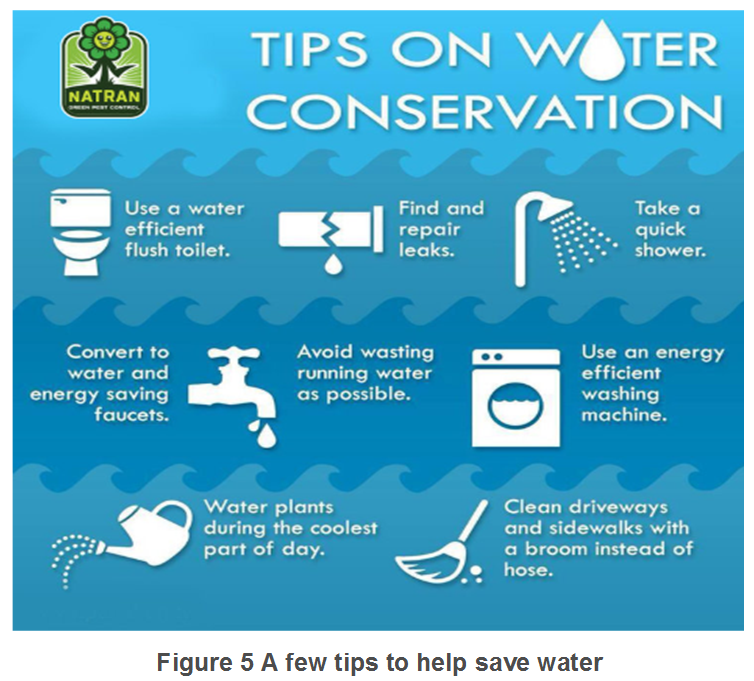
Rainwater harvesting
- Books Name
- Class 6 Science Book
- Publication
- PathSet Publications
- Course
- CBSE Class 6
- Subject
- Science
Rainwater Harvesting

Water harvesting is the activity of collection of rainwater directly by various means.
- Harvested water can either be used immediately or can be stored for later use.
- In Kerala and Mizoram, it rains almost the whole year-round. Therefore, here small tanks are used to collect rainwater, which drains from rooftops through pipes into these tanks. This water is used directly.
- In a place like Delhi where the monsoon lasts only for 3 months, it is more useful to collect rainwater as groundwater.
Rainwater does not always fall on soil or water sources; in fact, much of it falls on rooftops of houses and concrete roads and thus does not become a part of groundwater. Hence, a very important method has been devised to harvest rainwater so that it can be stored for future use:
Rooftop Rainwater Harvesting – In this method, rainwater that falls on rooftops is allowed to pass in a storage tank through pipes. This water might be dirty and hence not fit for direct use; hence it can be allowed to seep directly into the ground with the help of pipes.
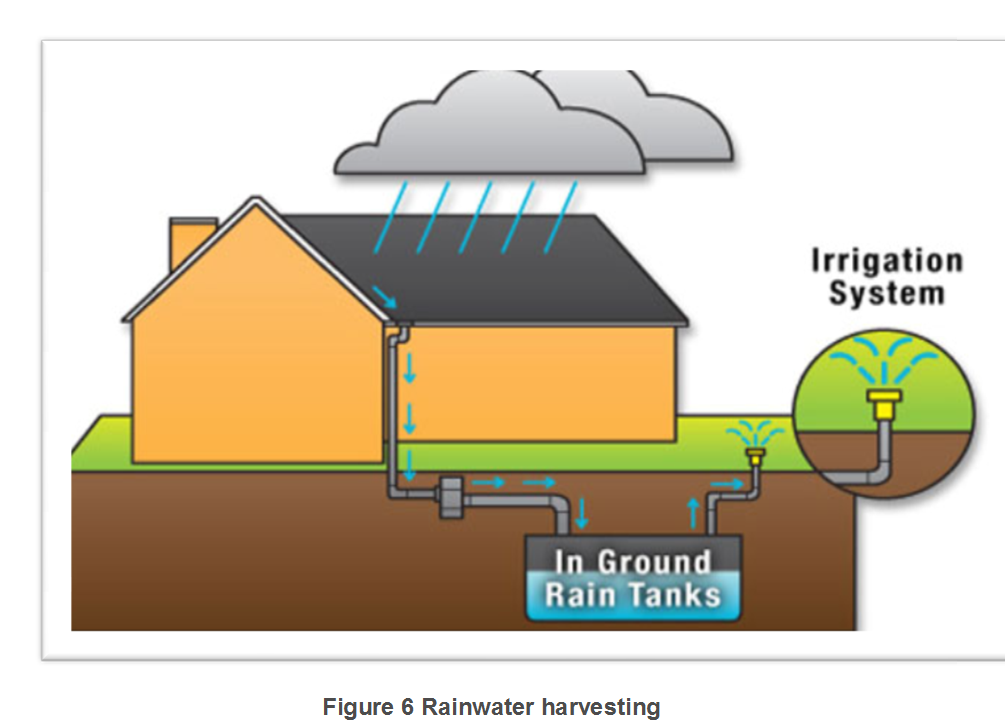
Summary
- Books Name
- Class 6 Science Book
- Publication
- PathSet Publications
- Course
- CBSE Class 6
- Subject
- Science
Summary
Conclusion:
Freshwater: Water found in rivers, lakes, and ponds used for domestic and commercial purposes is called freshwater.
Irrigation: Watering crops by artificial means is called irrigation.
Potable water: Water fit for human consumption is called potable water.
Transpiration: The release of water vapour into the atmosphere through the leaves of plants is called transpiration.
Water cycle: The cyclic movement of water from the atmosphere to the Earth and back to the atmosphere through various processes is called the water cycle.
Drought: Abnormally long period of insufficient or no rainfall is called drought.
Famine: Lack of food in a region for a long period is called famine.
Flood: A condition when the ground becomes submerged under water, due to heavy rain and overflowing of rivers is called flood.
Epidemic: A disease affecting thousands of people at the same time is called an epidemic.
Dam: A structure built on a river to store and hold back water is called a dam.
Rainwater harvesting: The process of collecting and storing rainwater from roofs or a surface catchment is called rainwater harvesting.
Conservation of Water: Water management is the effective utilization of water or managing the water resources carefully.

 Param Publication
Param Publication
 PathSet Publications
PathSet Publications
